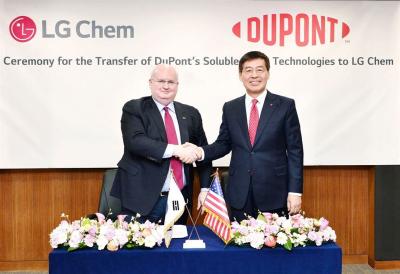LG Chem acquires DuPont's soluble OLED IP and technologies
LG Chem has acquired DuPont's soluble OLED technologies and assets, in a deal estimated at $175 million. LG Chem will receive DuPont's entire soluble OLED IP (540 materials and process patents) and all of DuPont's related equipment and R&D facilities. The deal does not include any assets related to Dupont's evaporation OLED business.

LG Chem believes that the OLED industry is moving towards ink-jet printing of OLED panels based on soluble OLED materials and technologies - and it has now acquired key technologies in this area. DuPont has been developing related materials for over 20 years, has been collaborating with equipment makers (such as Kateeva) and display makers and has also developed its own nozzle-printing process.









